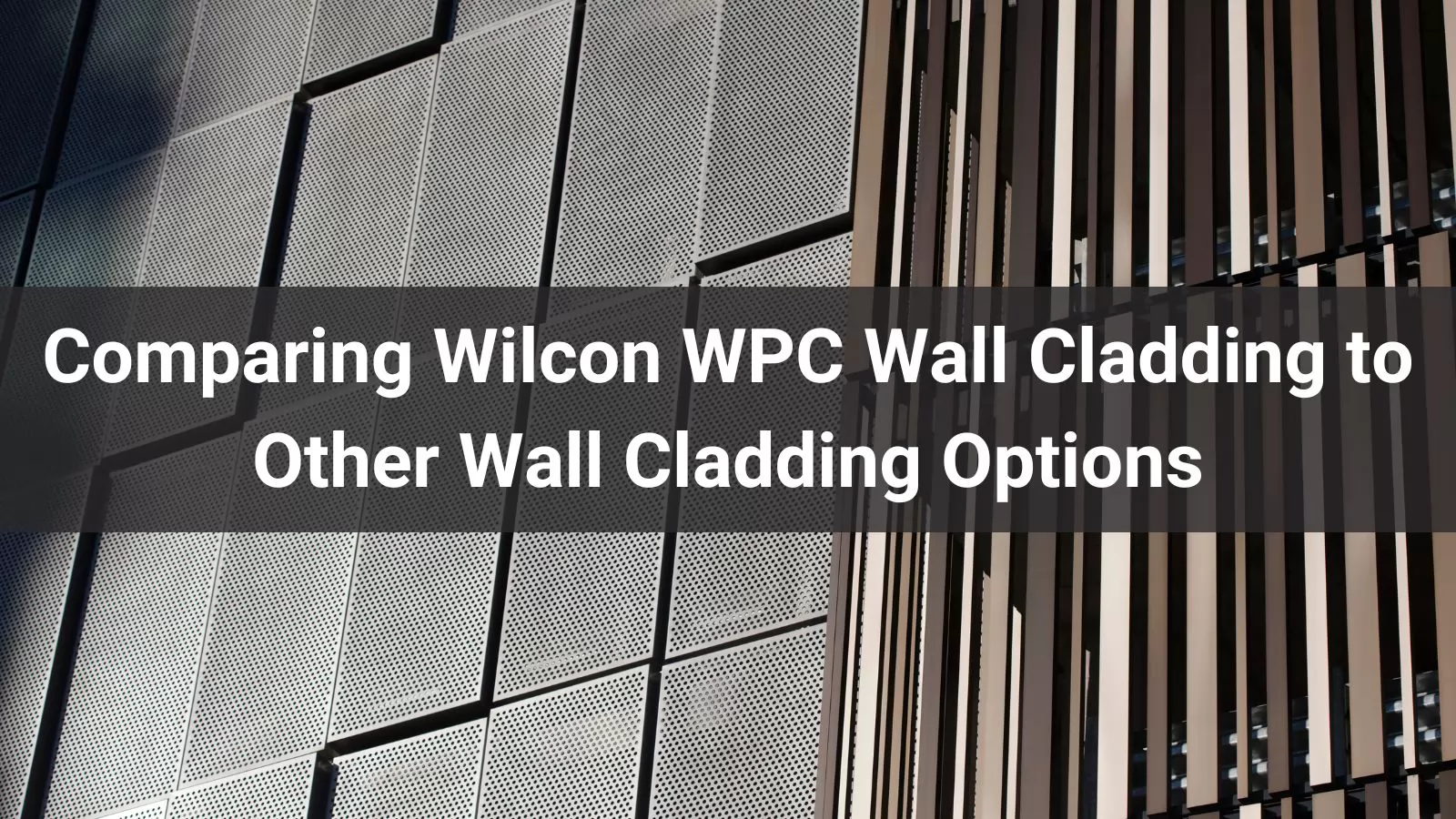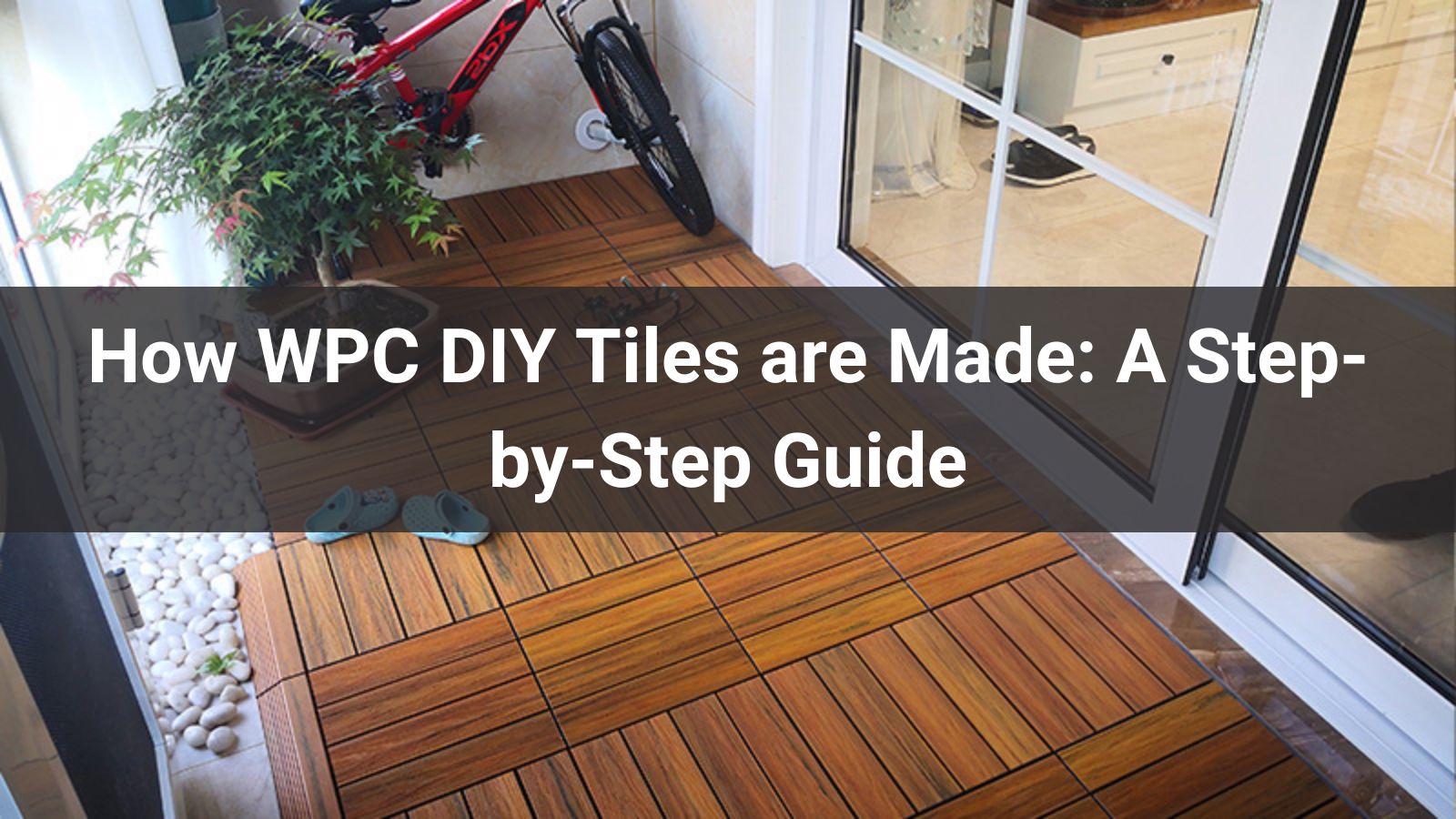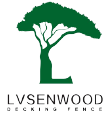

Wilcon WPC (Wood-Plastic Composite) wall cladding is a versatile and popular choice for enhancing both residential and commercial spaces. Known for its durability, aesthetic appeal, and low maintenance, it competes with other cladding materials like vinyl, timber, PVC, aluminum, brick, stone, and capped polymer. This article compares Wilcon WPC wall cladding to these alternatives based on material composition, durability, maintenance, aesthetics, installation, cost, environmental impact, and additional features.
Wilcon WPC wall cladding is made from a blend of 60-70% recycled wood fibers, such as sawdust or wood chips, and 30-40% thermoplastic polymers, like HDPE or PP, combined with additives including UV stabilizers, color pigments, and coupling agents. This hybrid composition delivers a wood-like appearance with the resilience of plastic. In contrast, vinyl and PVC cladding are composed entirely of polyvinyl chloride, a synthetic plastic, often with additives for color and flexibility. Timber cladding uses natural wood, such as cedar, pine, or oak, sometimes treated for weather resistance. Aluminum cladding consists of lightweight metal, typically coated to prevent corrosion. Brick and stone cladding utilize natural materials like granite or sandstone, or manufactured ceramic tiles. Capped polymer cladding, such as AZEK, is fully synthetic, designed to mimic wood without any wood content. The key difference lies in Wilcon WPC’s wood-plastic blend, which offers a natural look with enhanced durability compared to timber or vinyl, and greater eco-friendliness than fully plastic options like PVC.
Wilcon WPC is highly resistant to rot, insects, moisture, UV rays, and temperature fluctuations, making it suitable for both interior and exterior applications. It withstands harsh weather without warping or significant fading. Vinyl and PVC cladding are waterproof and weather-resistant but prone to scratches, dents, or swelling with prolonged moisture exposure. Timber is susceptible to rot, warping, and insect damage unless regularly treated, reducing its outdoor durability. Aluminum is corrosion-resistant and durable but can dent or fade over time. Brick and stone are extremely durable, resisting moisture, UV, and physical damage, though they are heavy and costly. Capped polymer offers superior resistance to moisture, impacts, and fading, with no wood content to degrade. Wilcon WPC outperforms timber and vinyl in durability and rivals capped polymer, though it may not match the longevity of brick or stone in extreme conditions.
Wilcon WPC requires minimal maintenance, needing only occasional cleaning with soap and water, without the need for painting, staining, or sealing. Vinyl and PVC are also easy to clean with water, but scratches may necessitate repair or replacement. Timber demands high maintenance, requiring regular staining, sealing, or painting to prevent rot and weathering. Aluminum needs minimal upkeep, though coatings may require refreshing over time. Brick and stone are easy to clean with water and vinegar, but grout or joints may need periodic maintenance. Capped polymer is virtually maintenance-free, requiring no staining or sealing. Wilcon WPC’s low maintenance surpasses timber and is comparable to vinyl, PVC, or capped polymer, making it ideal for those seeking low-effort solutions.
Wilcon WPC mimics natural wood with textured, wood-grain finishes available in colors like Olive Green, Teak, or Charcoal, offering a warm, rustic look with modern versatility for various design styles. Vinyl and PVC have a smooth, glossy finish with a plastic-like appearance, available in multiple colors but lacking wood-like texture. Timber provides authentic wood grain with customizable stains or paints, ideal for classic or natural designs. Aluminum offers a sleek, metallic, or painted finish, suited for modern or industrial aesthetics. Brick and stone deliver a timeless, textured look with earthy tones, perfect for traditional or rustic styles. Capped polymer mimics high-end hardwood with subtle color variations, providing a premium, natural appearance. Wilcon WPC’s aesthetic is more natural than vinyl or PVC, closely rivaling timber and capped polymer, though it lacks the unique grain variability of natural wood.
The installation process for Wilcon WPC wall cladding is straightforward, utilizing tongue-and-groove or interlocking systems that are typically fixed to a batten or aluminum framework. It can be easily cut with standard woodworking tools and installed horizontally or vertically, making it a DIY-friendly option. In comparison, vinyl and PVC cladding are lightweight and simple to install using clips or screws, also suitable for DIY projects. Timber installation is more challenging, as it is prone to splintering and may swell in moist conditions, requiring precise measurements for accuracy. Aluminum, while lightweight, demands specialized fixtures to ensure secure installation. Brick and stone cladding are heavy and labor-intensive, often necessitating professional installation due to their weight and the need for mortar work. Capped polymer cladding is similar to WPC, featuring easy-to-cut boards and hidden-fix systems for quick installation. The key advantage of Wilcon WPC is its simpler and cleaner installation process compared to timber or brick/stone, with ease of use comparable to vinyl and capped polymer, enhancing its appeal for DIY enthusiasts.
Wilcon WPC is moderately priced, generally more expensive than vinyl or untreated timber but more affordable than brick, stone, or capped polymer. Its long-term savings stem from low maintenance requirements. Vinyl and PVC have a lower upfront cost but may incur repair or replacement expenses over time. Timber is affordable initially, ranging from $40-$60/m², but maintenance costs increase its overall expense. Aluminum falls in the mid-to-high cost range, depending on coatings and finishes. Brick and stone are typically the most expensive due to high material and installation costs. Capped polymer has a higher upfront cost than WPC but is cost-effective over time due to minimal maintenance. Wilcon WPC strikes a cost-effective balance, with higher initial costs than vinyl or timber but lower than brick, stone, or capped polymer, offset by reduced maintenance expenses.
Wilcon WPC is eco-friendly, composed of 60-70% recycled wood fibers and plastics, which reduces landfill waste. It is recyclable and uses low-VOC binders, minimizing environmental harm. Vinyl and PVC are less sustainable, as their 100% plastic composition is harder to recycle and may release VOCs during production. Timber can be sustainable if sourced from certified forests, such as FSC-certified, but deforestation and chemical treatments pose environmental concerns. Aluminum is recyclable but energy-intensive to produce, resulting in a higher carbon footprint. Brick and stone are natural materials, but quarrying has significant environmental impacts. Capped polymer is highly sustainable, using recycled materials, no wood, and no VOCs. Wilcon WPC is more environmentally friendly than vinyl, PVC, or aluminum, comparable to capped polymer, and less impactful than unsustainably sourced timber.
Wilcon WPC offers thermal and acoustic insulation, fire resistance with a Class B rating, and versatility for both indoor and outdoor applications. It is also resistant to mold and mildew. Vinyl and PVC provide limited insulation unless specialized versions are used and are not fire-resistant. Timber offers good thermal insulation but is flammable and lacks acoustic benefits. Aluminum is a poor insulator unless paired with additional layers, though it is fire-resistant. Brick and stone provide excellent thermal mass and fire resistance but are heavy for retrofits. Capped polymer excels in moisture protection, insulation, and high fire resistance. Wilcon WPC’s insulation and fire resistance surpass vinyl, PVC, or timber, though capped polymer may offer slightly better performance in specific conditions.
Wilcon WPC wall cladding stands out as a balanced and versatile option, merging the natural aesthetics of wood with the durability and low maintenance of plastic. It surpasses vinyl and PVC in appearance and durability, requires significantly less upkeep than timber, and is more affordable and easier to install than brick, stone, or aluminum. While capped polymer may offer slight advantages in longevity and sustainability, Wilcon WPC remains a cost-effective, eco-friendly, and user-friendly choice for modern construction and design projects. When selecting cladding, consider your budget, aesthetic preferences, climate, and maintenance capacity to determine the best fit.
If you are looking for a reliable Chinese supplier, Contact us at LvsenWood now!










